
WordPress 5.3 Comes in with New Default Theme, Blocks, and PHP 7.4 Support
WordPress 5.3 is now available for download. The name is Kirk, in honor of American jazz musician Rahsaan Roland Kirk. This major release comes with many new features and improvements, including such in the user interface, accessibility, a lot of new block editor features, and a new default theme—Twenty Twenty. A total of 645 volunteers contributed to the release of WordPress 5.3, which is the largest group ever.
The PHP native JSON extension is now a requirement for sites running on WordPress 5.3 or later. Because the extension has been bundled with PHP since 2006, the fact that JSON is now required should not be an issue for the majority of WordPress users. However, keep in mind that WordPress will output an error and cancel the update if it detects that the JSON extension is missing.
We are about to cover the most significant changes that come with WordPress 5.3, which are:
Improved Site Health Component
The Site Health tool came along with WordPress 5.2. It informs you about your website’s health, while at the same time helping you improve it. Additionally, Site Health helps all admins recover their websites whenever technical issues occur. With version 5.3 of WordPress, there are some extra improvements to the tool.
Site Health Grading Removed
With WordPress 5.2, Site Health gave a percentage grade at the top of its status page. However, many considered that score grade to be doing more bad than good because it often makes users prioritize health scores over what is good for their WordPress site.
The indicator used to show a percentage and how many tests have been passed, but now that has changed. With WordPress 5.3, Site Health begins to show you whether your site’s health condition is Good or Should Be Improved. This way the condition of your site will be considered more a reminder, than an absolute necessity.
Recovery Emails Improved
Whenever a failure occurs, WordPress will attempt to send the admin a recovery email. However, such emails don’t really offer useful information when it comes to debugging. The admin is only informed that something went wrong with their WordPress site.
To provide some additional and helpful information and give you a hand with restoring your site, WordPress 5.3 is introducing the recovery_email_debug_info filter. This filter enables you to get the debugging information needed. You will now have the opportunity to resolve the issue by yourself, or at least know how to effectively get help.
What’s New with Gutenberg
Since it launched with WordPress 5.0, Gutenberg has been improved regularly with the help of many contributors globally. With that said, new releases of the Block Editor are not merged into the WordPress core as soon as they are ready.
This brings us to the point. With version 5.3 of the CMS, a whole package of thirteen Gutenberg releases are being merged all at once. You know what that means—a lot of new stuff. So, If you haven’t used Gutenberg until now, it’s probably time to give it a go.
New and Improved Blocks
Apart from improvements on various existing Gutenberg blocks, the user interface, as well as the user experience, are overall improved. There are also some interesting new visual hints and animations. Now you can improve your blog post formatting even further.
New Group Block
An addition to the blocks is the Group Block. With WordPress 5.3, you can create groups of blocks and interact with them altogether.
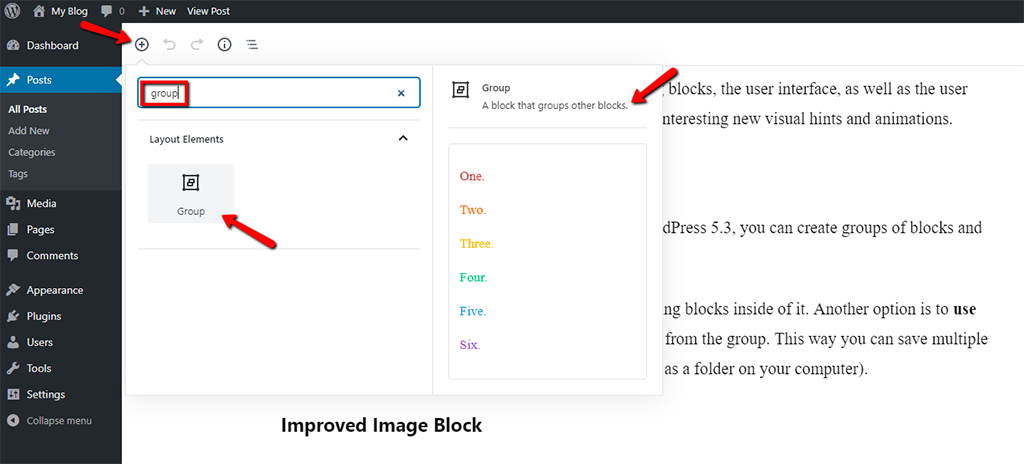
It’s quite simple—add a group block and then begin adding blocks inside of it. Another option is to use the drag and drop if you want to add or exclude blocks from the group. This way you can save multiple block items as just one reusable group block (consider it as a folder on your computer).
Improved Image Block
The image block has been improved with WordPress 5.3. You can now select a style for your images: Default and Circle mask:
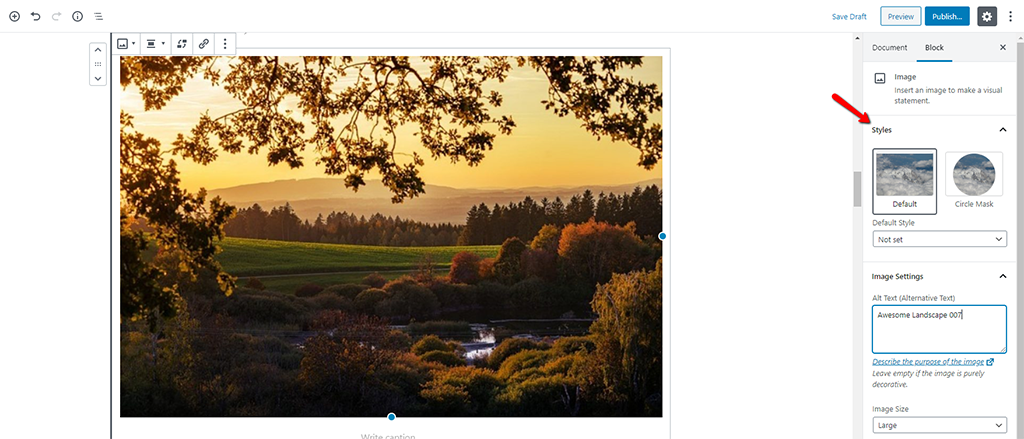
Improved Columns Block
With the columns block, you can now choose between different layouts, or adjust the width of every column from the settings.
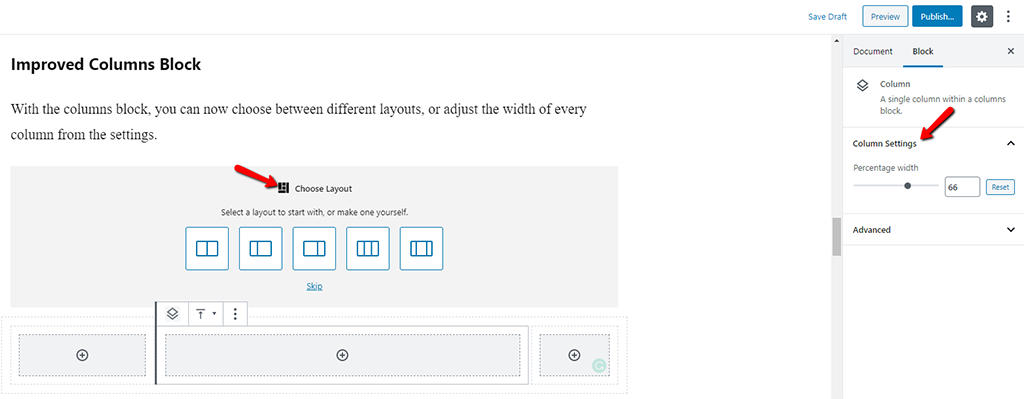
The Add New Block placeholder inside columns is also clearly visible, which makes it much easier when creating multi-column layouts.
Improved Table Block
The table block gets improved visually. Now you can select styles and add stripes to the table rows.
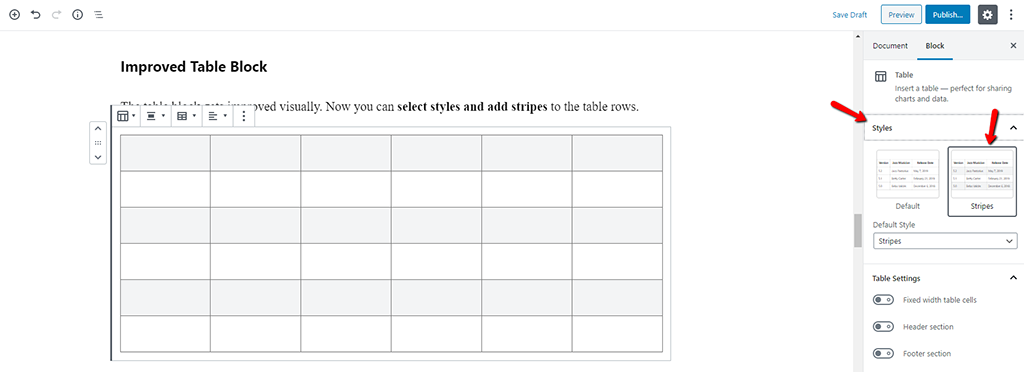
Additionally, you can add header and footer rows to your tables:
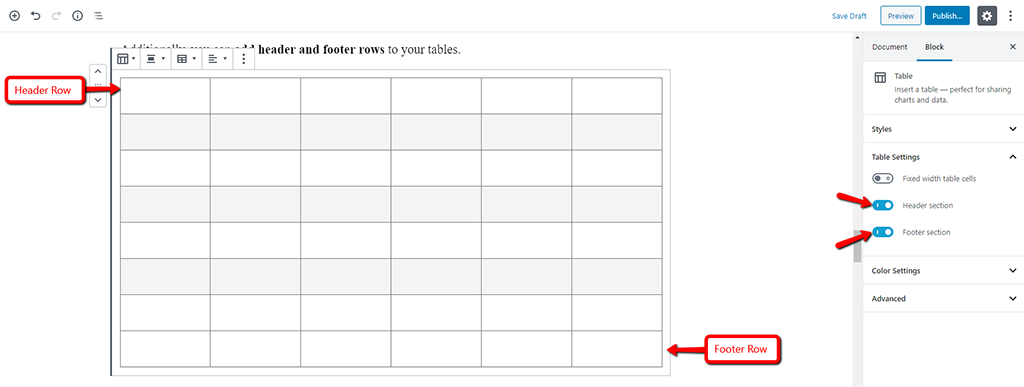
Improved Button Block
If you need to add a button in your posts or pages, then you will probably love the fact that the button block is also getting some love. You can now customize your own border-radius for each button block.

Additionally, you can set the target, while also adding ‘rel’ attribute to the link. This means that you can open your button links in new windows, making them nofollow when needed.
Block Navigation Mode
There is a new navigation mode (Gutenberg 6.3) that enables you to navigate between blocks using the Tab or Arrow keys, without having to go into block content. Users can switch from Navigation mode to Edit mode and back just by hitting Enter or Esc. This is a great feature and a big improvement in usability, especially when we talk about screen readers.
Inline Image Reordering in Gallery Blocks
The Gallery block received the inline image reordering. You are now able to rearrange images in your gallery only with a click on Move image forward and Move image backward.
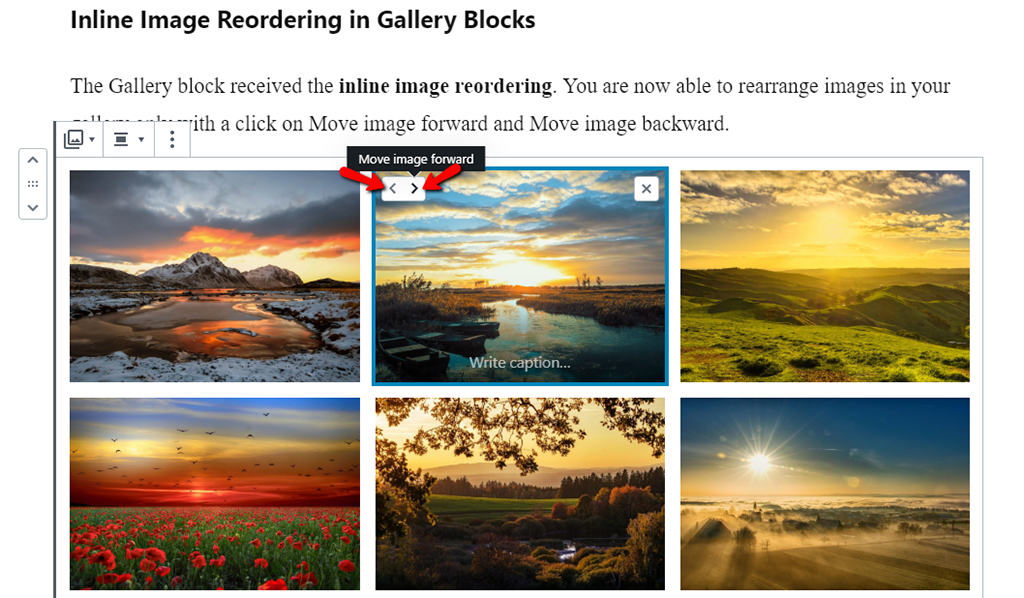
Improved Latest Posts Block
Up until now, the Latest Posts block used to just add a list of recent posts. Now, with WordPress 5.3, this block will additionally allow you to add and control excerpts lengths. Currently, the latest posts block simply adds a list of your recent posts. In WordPress 5.3, the latest posts block will also allow you to add excerpts and control excerpt lengths as well.

Keep in mind though, the Latest Posts block still doesn’t show the post thumbnails.
List Block Improved
Lists block now has indent and outdent shortcuts, start value, and support for reverse order (when using ordered lists).

A New Default WordPress Theme
As everyone probably expected, WordPress 5.3 comes with a new default theme – Twenty Twenty. This new theme is based on a free WordPress theme—Chaplin. Twenty Twenty is designed by Anders Norén, with its most elegant part being the typography. The new default theme comes with a font family called Inter typeface. The font works perfectly for headlines, making them appealing and crisp. Additionally, Inter typeface also looks very good on small screens (mobile devices).
Twenty Twenty helps people capitalize on the Block Editor and create attractive content layouts for their WordPress posts and pages.
Twenty Twenty also includes a cover and a full-width template for pages and posts. You can find two navigation menus at the top, a Social Links menu at the bottom, in addition to two menus for mobile device screens.
The theme is with a single column layout, meaning there are no sidebars to the left or right of your content. With that said, there are two areas at the bottom that where you can add widgets.
Last, but not least—Twenty Twenty works with all of the popular WordPress page builders.
Design and User Interface Updates
Some changes with the overall appearance of WordPress come with the 5.3 release. The changes are not significant, and they might even go unnoticed by many WordPress admins. However, the changes are present, and they include:
- Improved Color Contrast. There has been an improvement in color contrast, as well as many accessibility issues being fixed;
- Admin Email Verification. When the admin (you) has not logged in a period of time, there will now be an admin email verification. This interval is set to six months by default, but it can be changed by developers if they use the admin_email_check_interval filter;
- Resuming Uploads. Uploading large images (or videos) from a smartphone will no longer break things in the middle of the process. WordPress now supports upload resuming for whenever they fail;
- Image Rotation. Images will now be correctly rotated upon upload—according to EXIF orientation metadata.
Some Love for the WordPress Developers
WordPress 5.3 comes with plenty of changes and improvements for the WordPress developers. We will roughly cover some of the most significant changes:
Date/Time Core Component Improvements
This component deals with everything related to date, time, and timezones. Andrey “Rarst” Savchenko said:
Date/Time component relied on the so-called “WordPress timestamp” — a sum of Unix timestamp with a time zone offset. This was causing many bugs and a lack of interoperability with upstream PHP or any external systems. Inline documentation erroneously referred to these as Unix timestamps.
It was impossible to remove WordPress timestamps without backward compatibility issues. However, the component code got improved by applying several bug fixes, and inline documentation was corrected where needed.
New Aria-current Attribute
Whenever a new post or page is published, its name would appear in a number of menus and widgets. With WordPress 5.3 comes a new aria-current=”page” attribute. This attribute is to point out links to the same page. Theme developers, you can feel encouraged to add specific styles to those links. The change affects:
- Recent Posts;
- Navigation Menu;
- Category;
- Pages;
- Archives.
The REST API in WordPress 5.3
Along with everything else, WordPress 5.3 brings some improvements to the REST API as well.
One of the most significant changes here is the addition of support for object and array data types to register_meta functions.
With this new power, the REST API now supports metadata types natively, which enables you to use the API for performing schema-based validation. All this could result in simplifying the client code interaction with some complex values, ultimately allowing developers to build complex meta-based blocks with the use of REST API.
For a more comprehensive overview of the REST API improvements coming with WordPress 5.3, see The REST API in WordPress 5.3.
Under The Hood Improvements in WordPress 5.3
The following are some of those under the hood changes that come with WordPress 5.3:
- WordPress now offers a better way to discourage Google and other search engines from indexing a site when we check the option Discourage search engines from indexing this website;
- WordPress 5.3 also has better compatibility with PHP 7.4;
- A show/hide password toggle is now available on your WordPress login screen for both mobile and desktop.
WordPress Multisite Changes in 5.3
In case you are among the people that use WordPress multisite for your website network, you will be happy to know about the following improvements in that area:
- Developers can now filter sites by status;
- Multisite now stores database version as meta;
How to Update to WordPress 5.3
For updating your WordPress core, we recommend that you utilize the one-click staging environment. Do that to clone your live WordPress site and test the new 5.3 version of the CMS. Always make sure everything works properly (plugins and theme) before going into the new release. Also, it never hurts to create a manual backup before updating your live site. You can never be too cautious.
To update to the 5.3 version of WordPress, all you have to do is click on the updates icon in your admin dashboard. Next, click Update Now. While being updated, your site will be in maintenance mode. As soon as all updates are complete, the site will be as normal.
When the update is finished, you will see the Welcome to WordPress 5.3 screen. That’s all.
Conclusion
Those are the most significant features coming with WordPress 5.3. Keep in mind that there is an incredible number of small changes, bug fixes, and deprecations, in addition to:
- Thirteen versions of the Gutenberg plugin merged into one;
- Various improvements to the Site Health Tool;
- New Twenty Twenty default theme;
- Admin interface improvements;
- New functions and features for developers and designers;
- Better support for PHP 7,4.
Share your favorite new features and improvements in the comment section. Add anything that you think is important and we missed mentioning. Happy New WordPress!

The latest tips and news from the industry straight to your inbox!
Join 30,000+ subscribers for exclusive access to our monthly newsletter with insider cloud, hosting and WordPress tips!

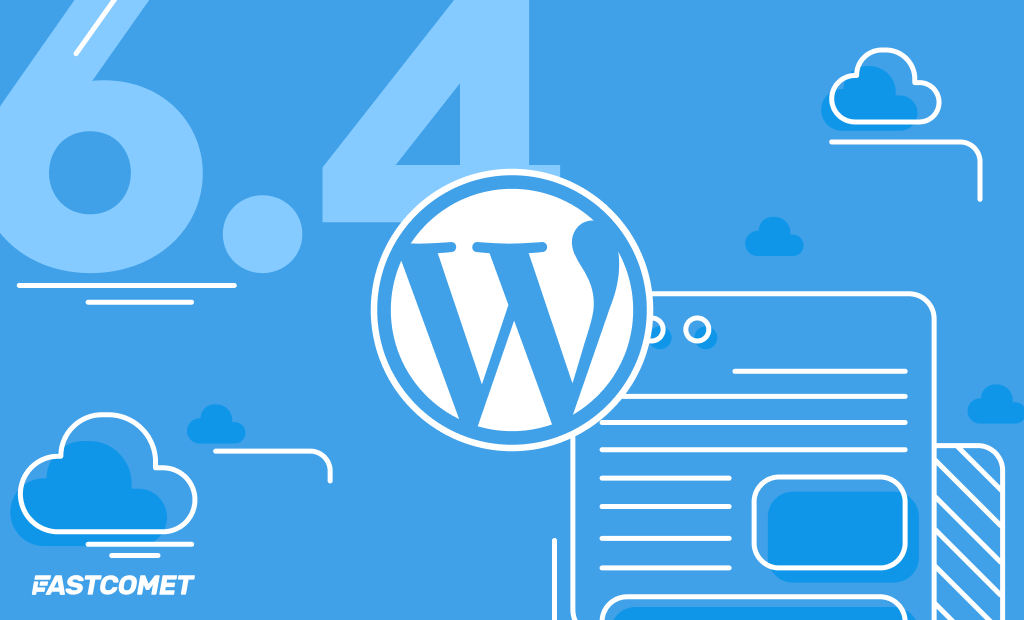
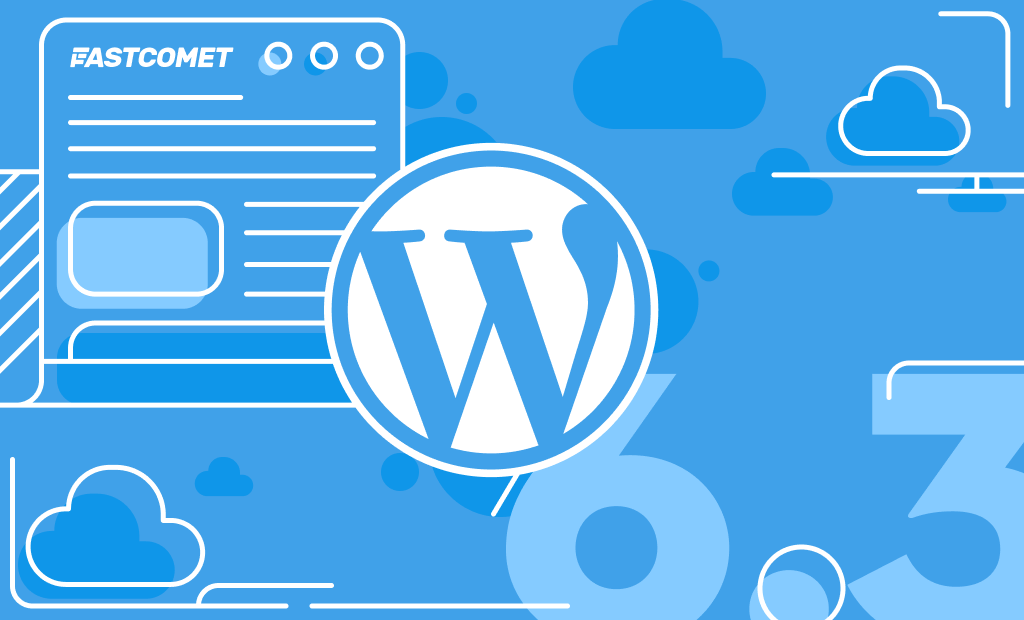

No Comments